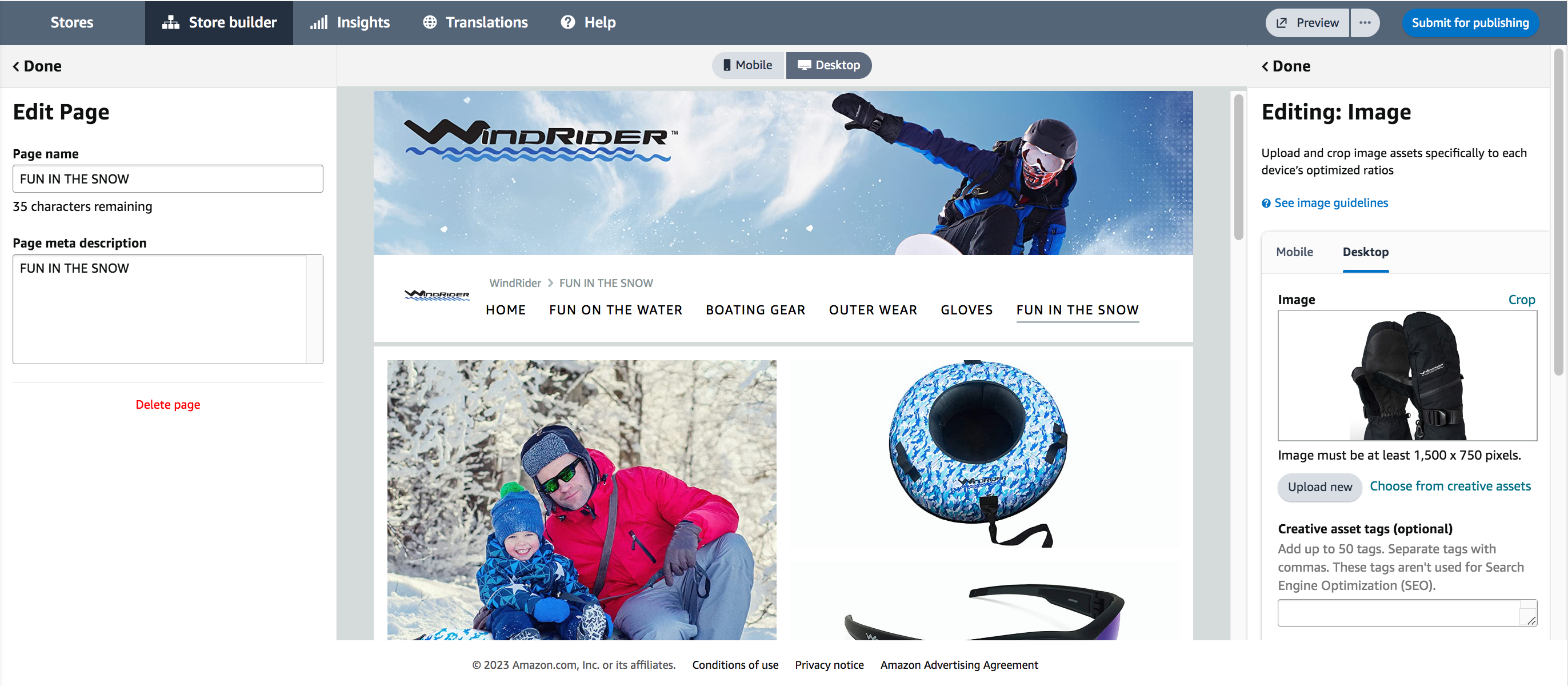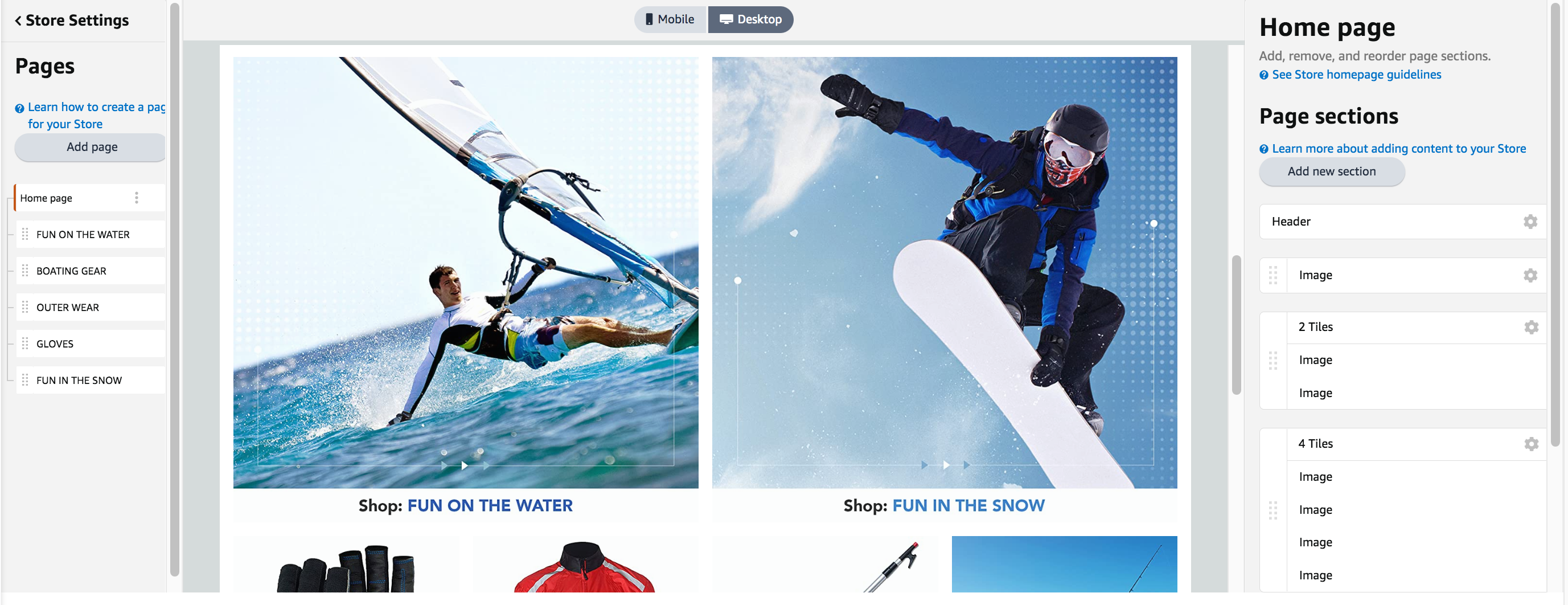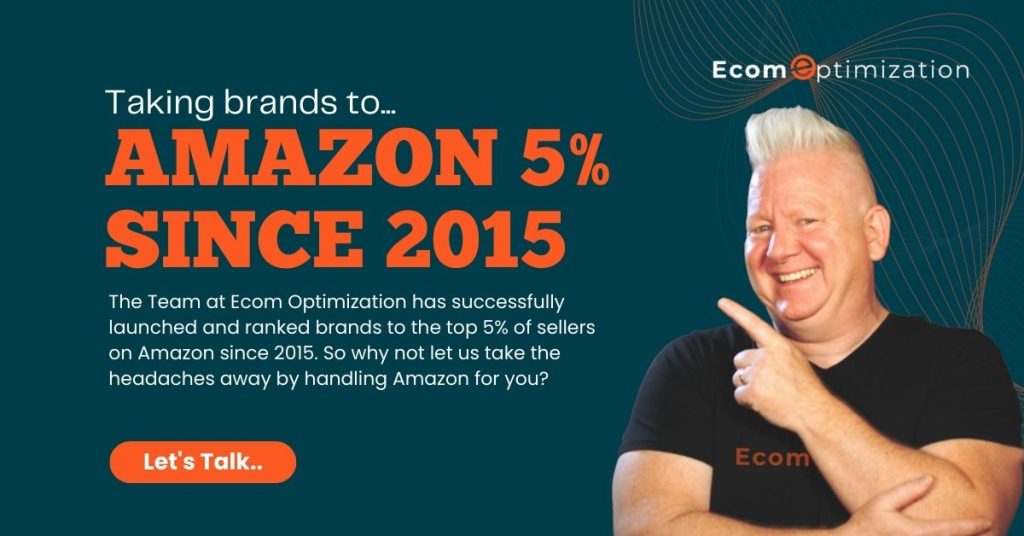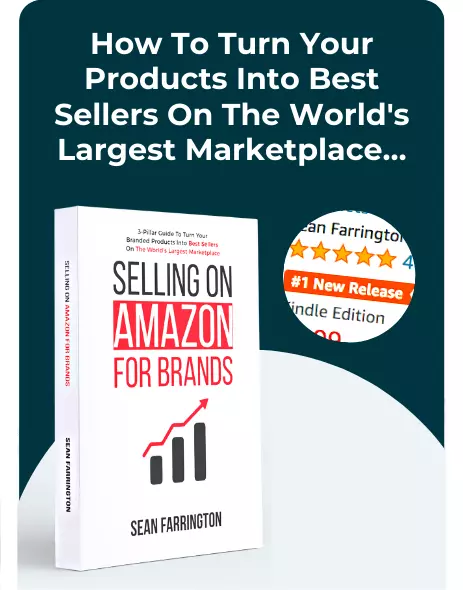Can An Amazon Branded Storefront Be Profitable Too?

If you are interested in Amazon Branded Storefronts, you are in the right place!
Building an Amazon store can help you build brand awareness, and create a loyal customer base. But can it be profitable?
In this article, we’ll discuss how to build a brand store on Amazon and answer some frequently asked questions about the process (and, of course, the sales results).
Jump To Section
Why Have an Amazon Storefront?
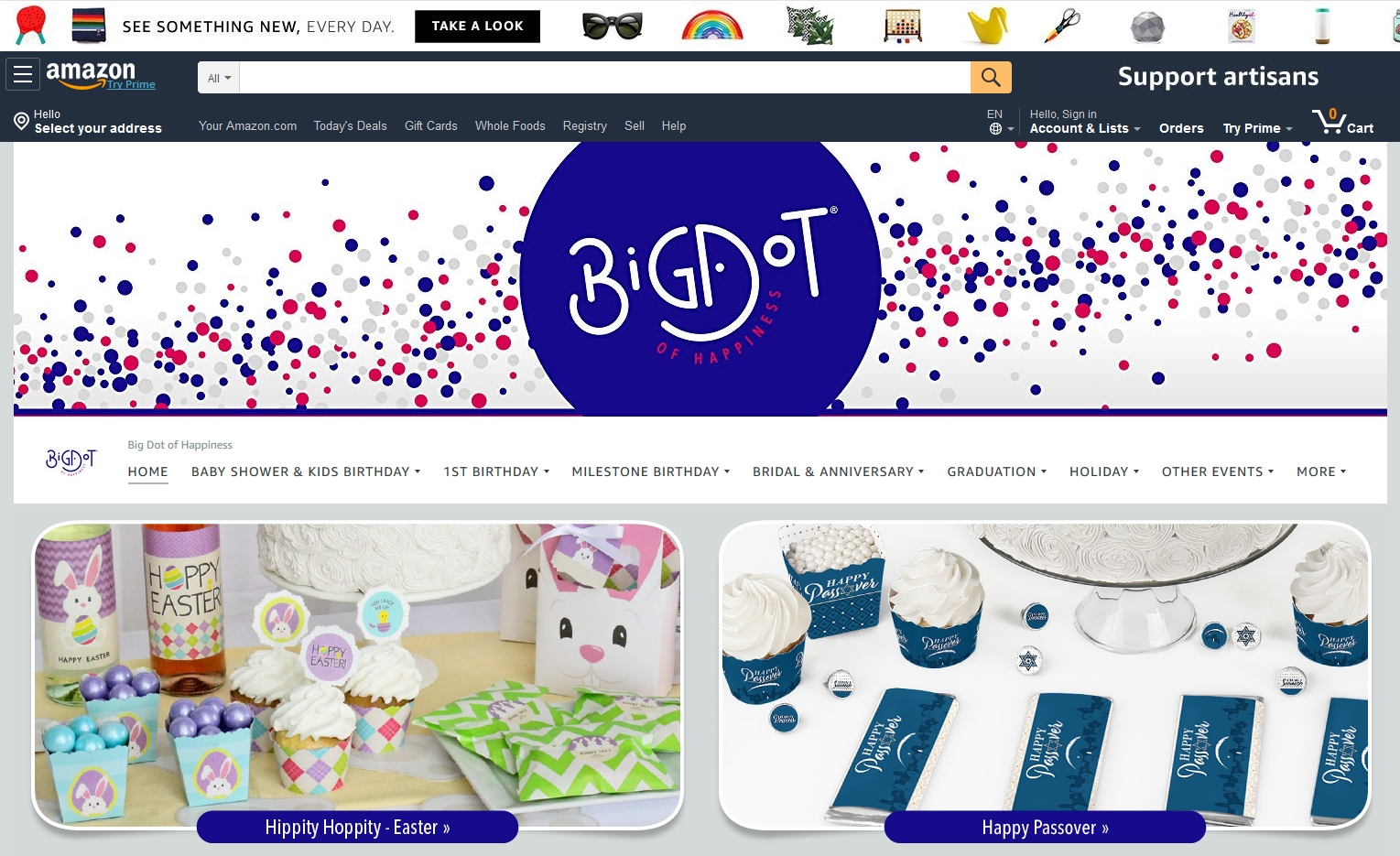
Before we dive into data and details about owning an Amazon store, let’s talk about why having one is important.
First and foremost, as a brand owner, having an Amazon store gives you an uncluttered (read: advertising-free space to showcase your brand and your products.
An Amazon store allows you to create a cohesive shopping experience for your customers, rather than a loose collection of individual listings.
Having an Amazon store can also help increase your brand’s visibility on Amazon. When customers search for products on Amazon, the search results will often include links to your Amazon store. If you have an Amazon store, you’ll have a better chance of appearing in these search results.
Setting up an Amazon store also makes your brand eligible for Sponsored Brands Ads. These ads have proven highly effective, and use your Amazon storefront as a landing page to drive new traffic.
Finally, having an Amazon store can help you build customer loyalty. By showcasing your brand and creating a cohesive shopping experience, you’ll make it easier for customers to remember you and come back for future purchases.
But Can Adding An Amazon Storefront Be Profitable (Some Interesting Statistics)
+83% higher dwell time
Historical Store insights data (directly from Amazon) has shown the management team at Ecom Optimization that shoppers who are presented with 3 or more pages in an Amazon brand store tend to stay longer and purchase more items than when presented with fewer pages.
This indicates that stores with multiple products, multiple detailed descriptions of their products, and other helpful content enjoy higher engagement which leads to increased profits.
Additionally, having an Amazon store may further drive up sales due to increased trustworthiness among customers.
Ultimately, this data combined with the next bit of data suggests that creating an Amazon brand store with multiple pages can be a profitable venture for businesses.
+35% higher attributed sales per visitor
When an Amazon store is updated with new products and promotions, it can lead to significant increases in sales per visitor. In fact, historical data shows that stores that have been updated within the past 90 days had 21% more repeat visitors, as well as 35% higher attributed sales per visitor than those that were not updated.
This data shows that keeping your Amazon store up-to-date with fresh content can actually lead to real top-line sales!
A great way to do this is with Amazon Posts (see our article on Amazon Posts for more info)
Importance of Branding On Amazon
Branding is important to establish credibility and trust for any business. Selling on Amazon is no different.
Building a strong brand can differentiate you from your competitors and help you to build a loyal customer base. In fact, according to a survey by Lucidpress, consistent branding can increase revenue by up to 23%.
What are the strategies for building a strong brand on Amazon?
Defining your brand: The first step in creating a strong brand is defining what your brand actually stands for.
This step will include identifying your brand’s mission, values, and unique selling propositions for each of your products and for the brand as a whole:
Your mission statement should convey what your business does and why it exists,
Your values should reflect what your business stands for (ie. your moral imperative).
Your USP should highlight what sets your business apart from others (from the customer’s point of view.
Developing a visual identity: Once you have defined the essence of your brand, it’s important to develop a visual identity that reflects your brand’s mission, values, and unique selling proposition.
Your brand identity includes:
Your logo (including how it is to be used)
Your tagline
Your color scheme (in hex code)
Specific typography
Common lifestyle imagery
Tone of voice examples.
Branded visual elements.
Your brand identity should reflect your brand’s personality and resonate with your target audience. Brand guidelines (ie a Brand Board) can help to maintain consistency and ensure that your brand identity is used correctly.
Building a consistent brand voice: A consistent brand voice is essential for building a strong brand. This means creating a consistent tone in messaging and language across all points of your Amazon presence, and all off-Amazon marketing channels, including your website, social media, print materials, and packaging.
Incorporating storytelling: Incorporating storytelling into your branding efforts can help to build a stronger emotional connection with your customers. Especially if this storytelling goes beyond a simple brand story and focuses on seeing the world from your customer’s perspective.
A simple way to do this is via actual customer testimonials. When it comes to using testimonial language on Amazon, this wording has to be delicately woven into a narrative to avoid any Terms Of Services issues.
Measuring and refining your brand: Finally, it’s important to measure and refine your brand over time. This means regularly monitoring your brand’s performance on Amazon via Brand Registry Metrics and making adjustments as needed.
Amazon Brand Store Benefits
The benefits of having an Amazon Store include…
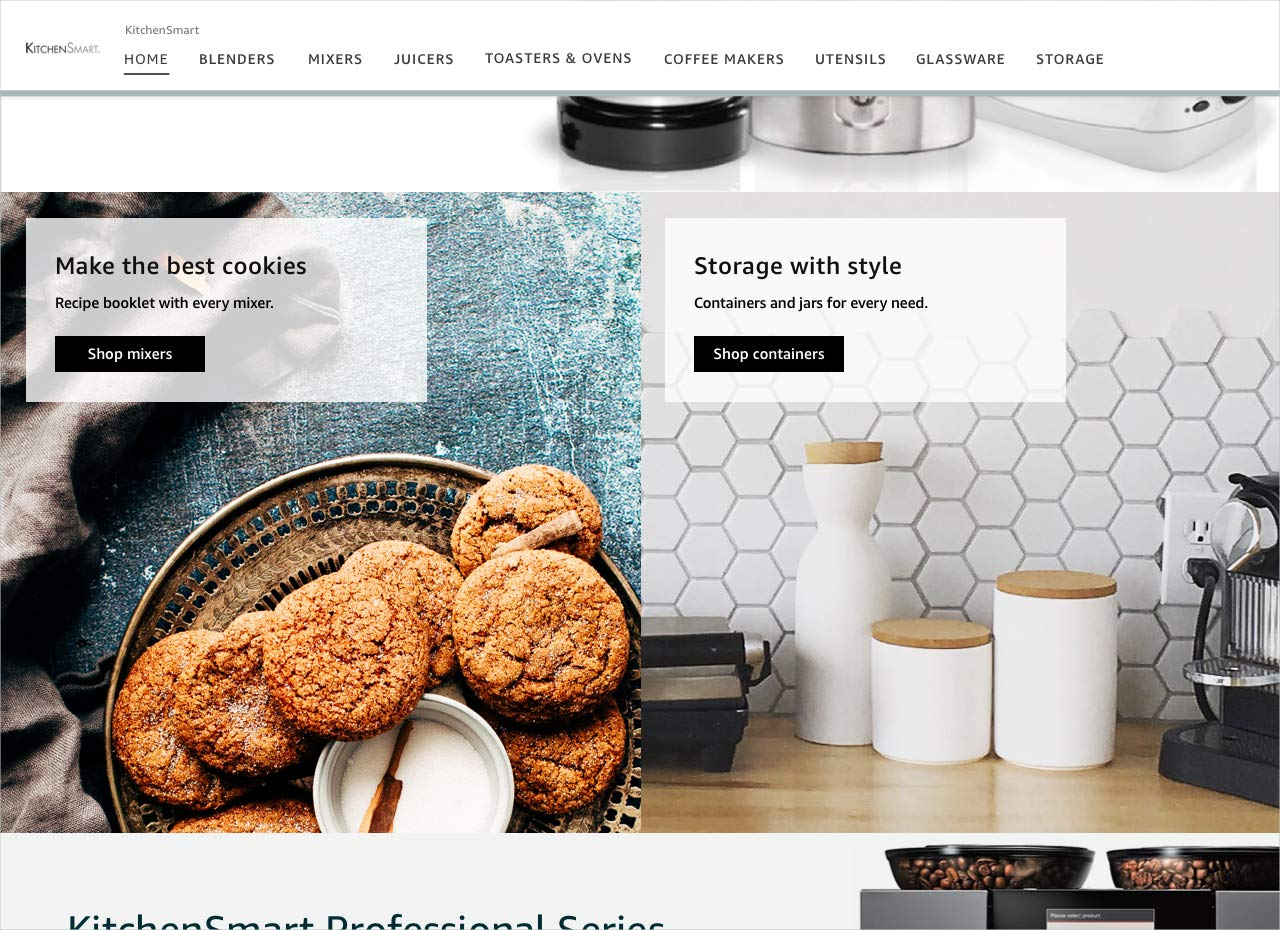
Increased Visibility and Brand Awareness
With over 300 million active shoppers, Amazon provides a massive platform for businesses to increase their visibility and reach a broader audience. By creating an Amazon brand storefront, you can promote your brand and products to a huge customer base and benefit from Amazon’s extensive marketing and advertising resources available only to Brand Registered sellers.
Easy Setup and Management

Creating an Amazon storefront is relatively easy (at least compared to most Amazon activities).
Amazon provides a host of tools and resources to help businesses set up and manage their Amazon store efficiently. There are even step-by-step tutorials to guide you through the intuitive management tools. If you meet the qualifications (See below) you can quickly get started and start selling your products on your own Amazon store fairly fast.
Increased Credibility and Trust
Amazon is a trusted and respected brand by itself. This means that having an Amazon storefront can transfer credibility and trustworthiness to your brand by association.
Data shows that customers simply trust Amazon more than individual sites. That’s why Amazon.com has over 200 million credit cards on file from buy-happy shoppers who are more likely to purchase (and repeat purchase) from a business that has an Amazon storefront, as it provides a sense of security and reassurance.
Participate in Sponsored Brands Ads for Increased Visibility
Amazon Sponsored Brands Ads are a powerful marketing tool for moving your brand to the front of the line and boosting sales on Amazon.
Amazon Sponsored Brands Ads allow you to showcase your brand and products through video content, images, and text. These ads appear in the search results and on product detail pages, giving shoppers a glimpse of your brand and your products while shopping on Amazon.
Having an Amazon store is a prerequisite for running Sponsored Brands ads, as the ads use your store as a landing page for the ads.
What Makes A Great Amazon Store?
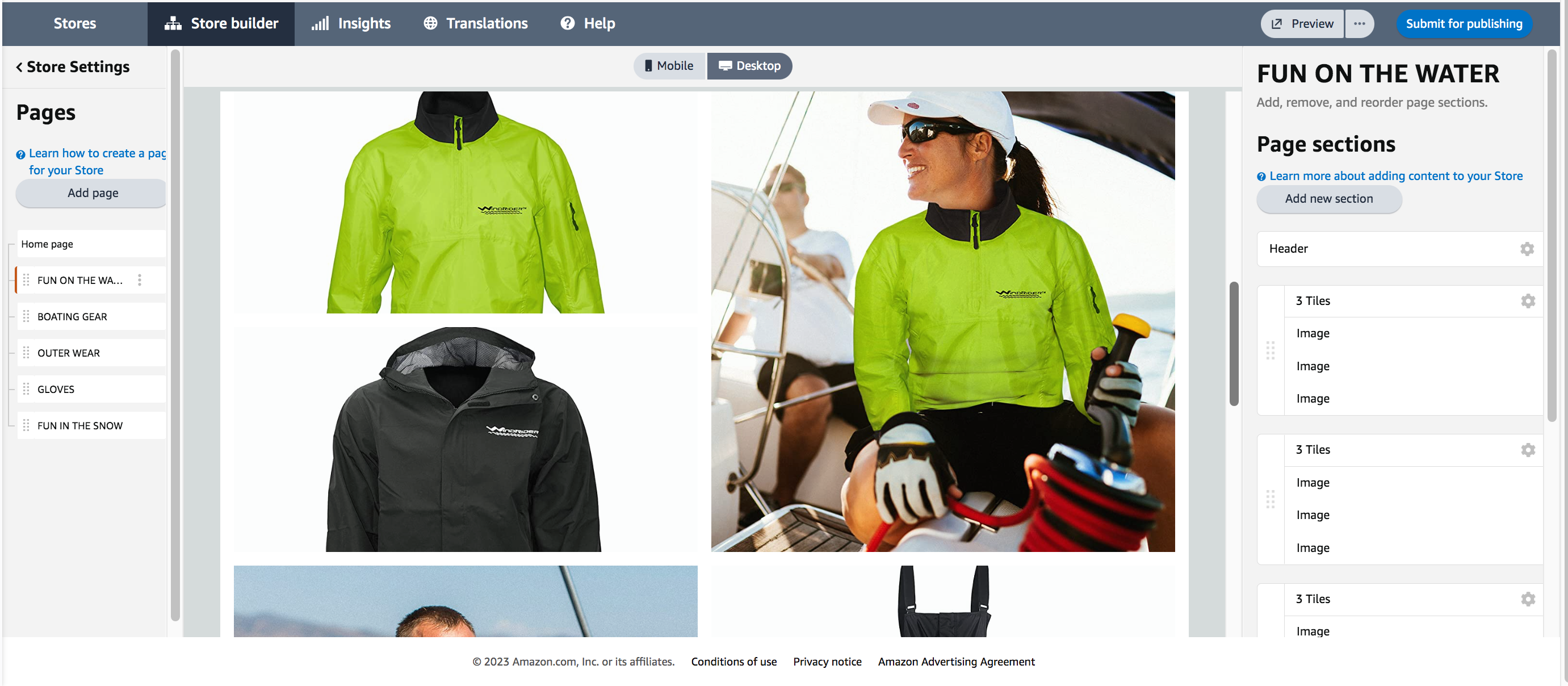
Now that we’ve established why having an Amazon store may be a good move for your brand, let’s talk about what makes a great storefront.
Here are some key elements to consider:
Branding: Your Amazon store should have a cohesive look and feel that reflects your brand.
This includes using your brand colors, logo, and imagery throughout the Amazon store.

Navigation: Your storefront should be easy to navigate. Customers should be able to find what they’re looking for quickly and easily. You can use the store builder to set up different sections based on themes and categories, like the categories for the show on the left of the Windrider store builder below:

Product organization: Your products should be organized in a way that makes sense for your customers. Consider organizing them by category or by use case for best user experience.
High-quality images: It goes without saying that your product images should be high-quality and show your products from multiple angles. But they should also be fun and engaging in a way that pulls your shoppers into your store.

Content: Your storefront should include engaging and informative content that tells your brand story and showcases your products. This can range from Photos, to Videos, to Amazon Posts.
Tips And Tricks For Amazon Storefront Design That Will Stand Out From The Crowd
A storefront is a virtual retail space dedicated to representing your brand on Amazon. It’s essential to design it in a way that is both visually appealing and yet still conveys your brand message.
The team at Ecom Optimization will share some tips and tricks for stellar storefront designs that can help you stand out from the crowd.
Utilize High-Quality Images and Videos
One of the most important things to keep in mind when designing your Amazon storefront is to use high-quality, yet engaging images and videos. Your storefront’s visual representation is the first thing that potential customers will see, so it’s crucial to make a good impression.
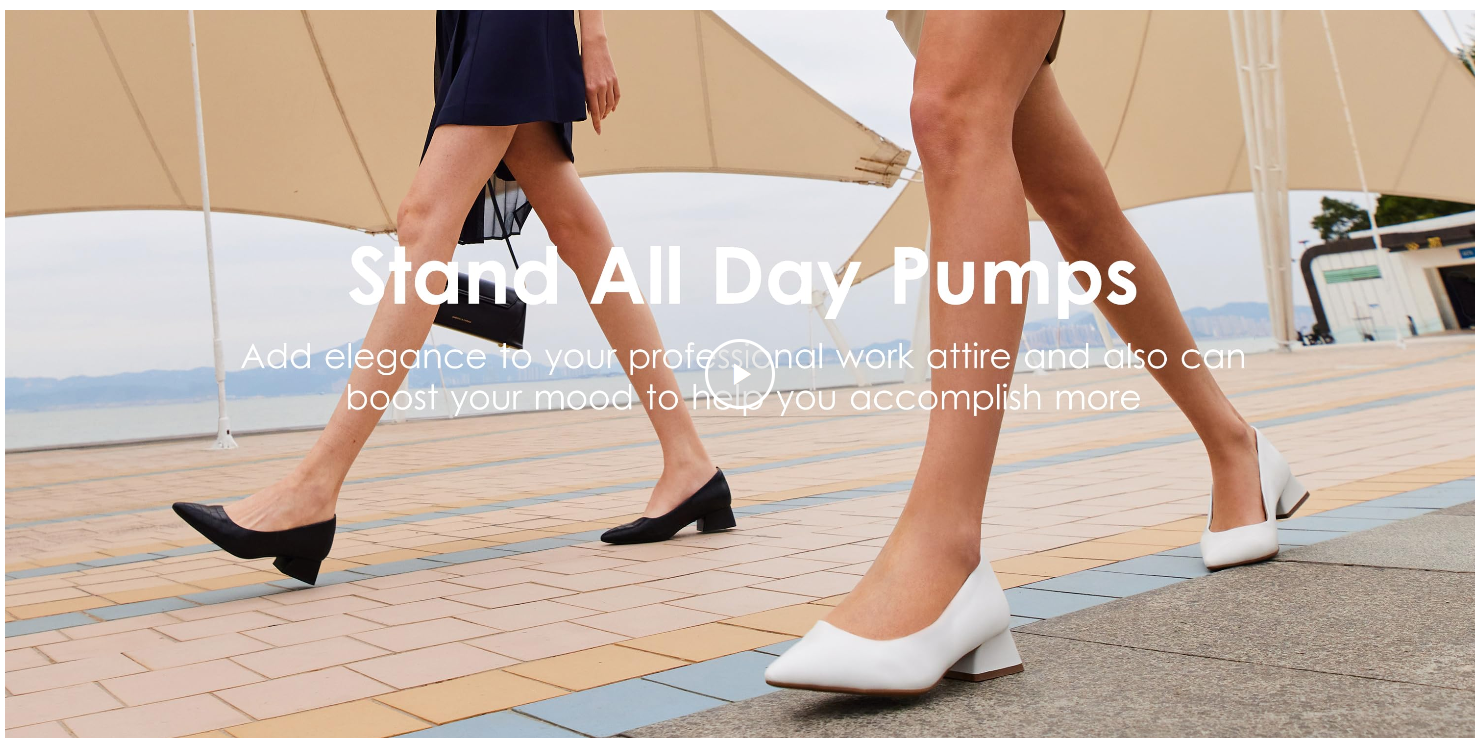
Using high-quality images and videos will not only make your storefront look professional but will also help your customers understand your products better. This is especially important if you’re selling products that need some explanation.
Use Your Brand’s Color Scheme
When designing your Amazon storefront, it’s best to keep the design focused around your brand’s color scheme to create a consistent visual identity across all Amazon assets, including your Amazon storefront.
Put your brand’s color scheme to use starting on your header, and then let it flow into other design elements. This will help to create a cohesive look and feel.
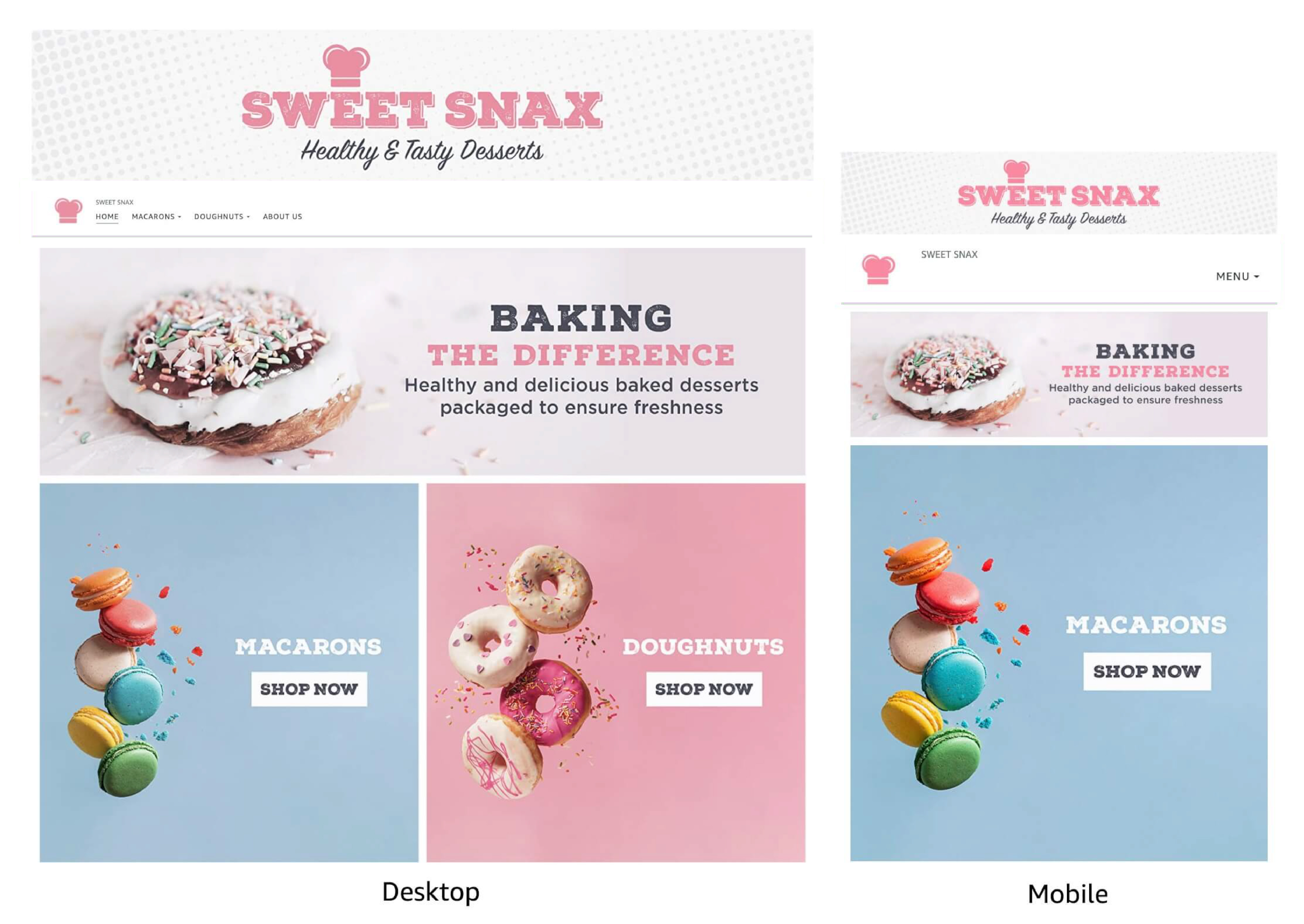
Optimize Your Storefront for Mobile Devices
With more and more people shopping online from their mobile devices (up to 60% on most Amazon categories) it’s essential to optimize your Amazon storefront for mobile devices.
This means that your storefront should be easy to navigate and should load quickly on mobile devices.
To optimize your storefront for mobile devices, you can use a responsive design that adapts to different screen sizes. You can also make sure that your storefront’s images and videos are optimized for mobile devices and that your storefront’s navigation is straightforward and easy to use.
Simply click the “Mobile” view in your Stor Builder for a preview, but then be sure to check on your phone after publishing (just in case).
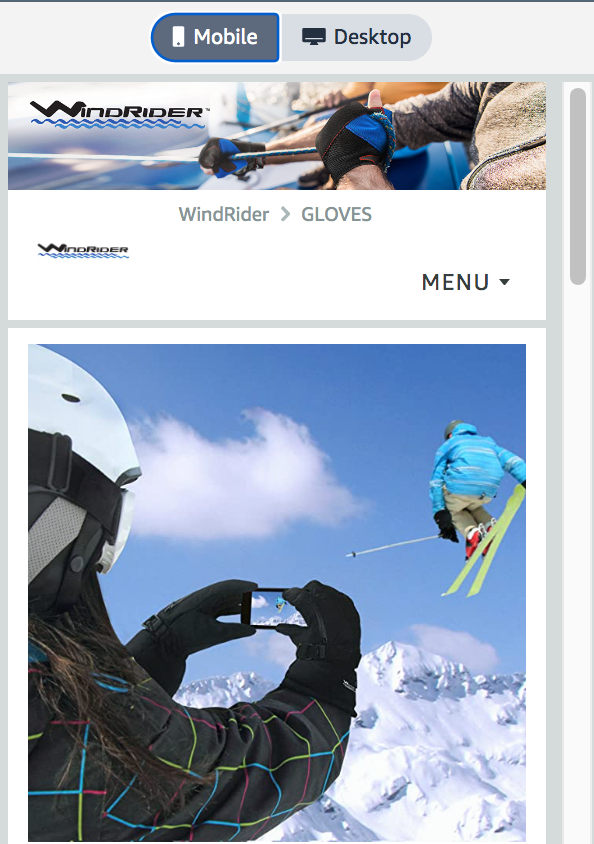
Amazon Brand Store Qualifications
Amazon Brand Stores are free
A Professional Amazon Seller Account is required
Enrollment in Amazon Brand Registry is required
What is Amazon Brand Registry?
Amazon’s Brand Registry is a program that allows brand owners to register their trademarks with Amazon. This program gives brand owners more control over their product listings on Amazon and helps them protect their intellectual property rights.
How does Amazon Brand Registry work?
To join the Amazon Brand Registry program, you need to have a registered trademark for your brand.
Once you have a registered trademark, you can apply for the Amazon Brand Registry program. Amazon will then review your application and, if approved, grant you access to a suite of tools to help you manage your brand on Amazon (including your Amazon branded stores).
Step-by-Step Guide to Building a Brand Store on Amazon
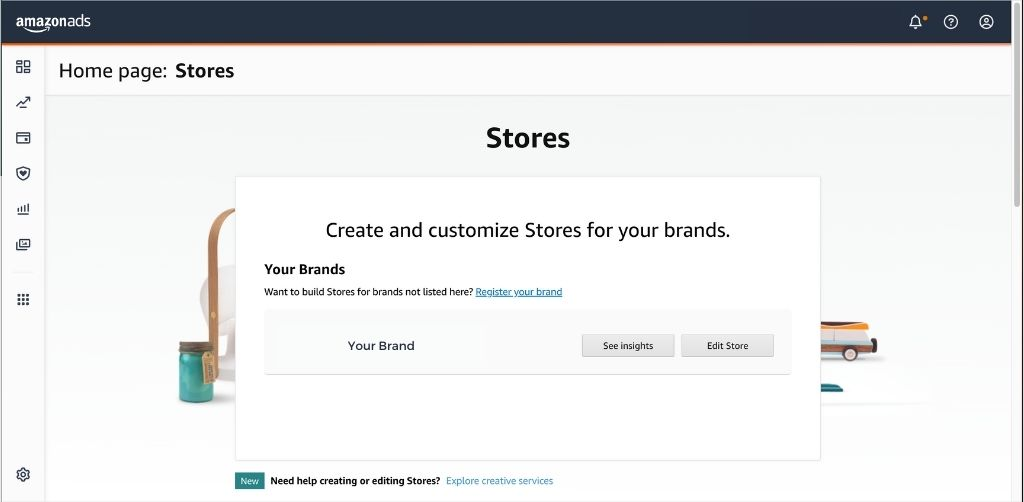
Step 1: Define Your Brand Strategy
Before building your brand store, you need to define your brand strategy and see if it is a fit for Amazon (Amazon is not a fit for all brands, reach out and the team at Ecom Optimization can help you to decide).
If you decide that Amazon is a good fit, then begin by identifying your target audience (and knowing how to find them on Amazon). Figure out how to present your brand voice and values, while establishing your unique selling proposition for your products on Amazon.
A clear brand strategy will help you create a store that is compelling and resonates with your target audience.
Once you have that you are ready to…
Step 2: Create a Professional Seller Account
To build a brand store on Amazon, you’ll need to have a professional seller account. This account will grant you to access Amazon’s powerful seller tools and features, such as the ability to create product listings and manage your inventory.
Go to the Amazon Seller Central website and click on the “Register Now” button. Follow the prompts to provide your business and contact information, and choose a selling plan (either Individual or Professional).
Step 3: Listing Your Products
Once your seller account is set up, it’s time to list your products.
You can either add products one at a time or use bulk listing tools to upload a spreadsheet of your products.
As we’ve already covered, you need to include high-quality images and detailed descriptions of your products to make them stand out to potential customers.
Your listings should also be optimized for Amazon’s A10 search algorithm (Formerly A9). Use proper keyword density and SEO-optimized product descriptions that pull shoppers through an emotional and logical sales process.
Additionally, regularly update your product listings to handle new sales objections as well as trending keywords, to ensure that your products remain competitive in the marketplace.
Step 4: Design Your Brand Store
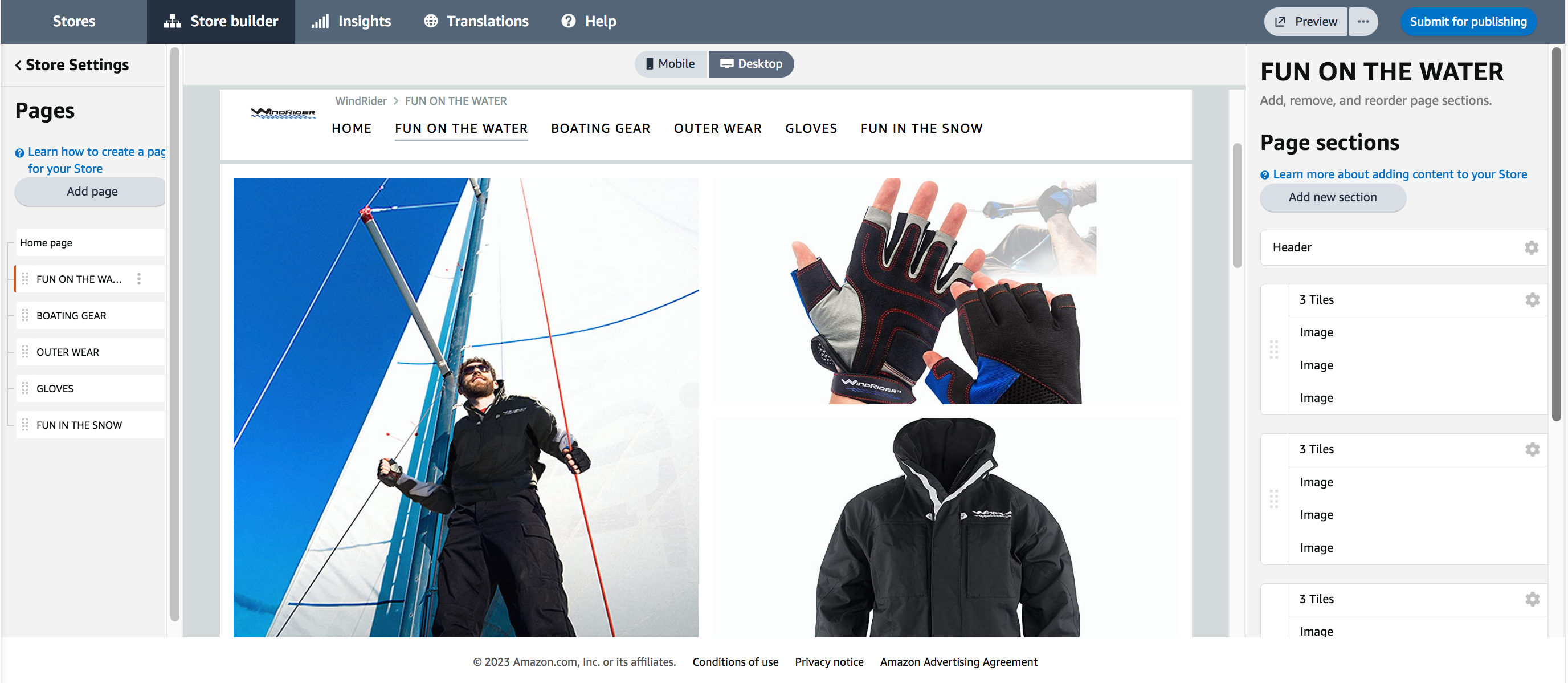
Once you have a clear brand strategy, it’s time to design your brand store.
Amazon provides several Widgets that you can use to create your brand store. If this step seems daunting to you, consider hiring a professional team to create a custom store for you.
Your brand store should be visually appealing and provide a seamless shopping experience for your customers.
To create your Amazon storefront, go to the “Stores” tab in Seller Central and click on “Create Store.”
Choose the Widgets and templates that match your brand’s aesthetic and fit your product categories. Customize your store with your brand logo, product images, and other branding elements.
You can add pages to your storefront to showcase your products, provide customer reviews, and share your brand story.
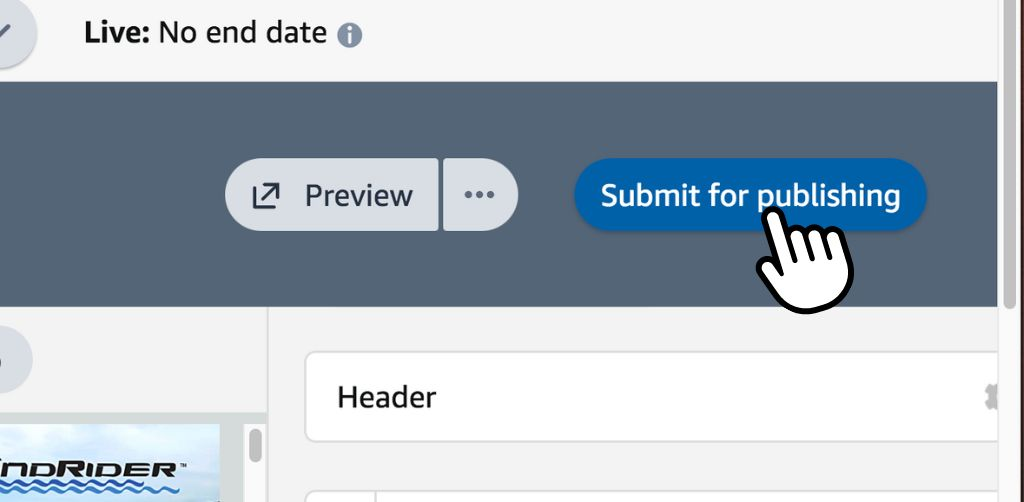
Step 5: Promote Your Brand Store
Once your brand store is up and running, you need to promote it to your target audience.
Amazon provides several promotional tools, such as Sponsored Products ads and Sponsored Brands ads, that can help increase your brand’s visibility and sales.
Use Amazon Advertising wisely to create ads that appear in search results and on product detail pages, and use social media and email marketing to drive traffic to your brand’s storefront.
How can I measure the performance of my Amazon Store?
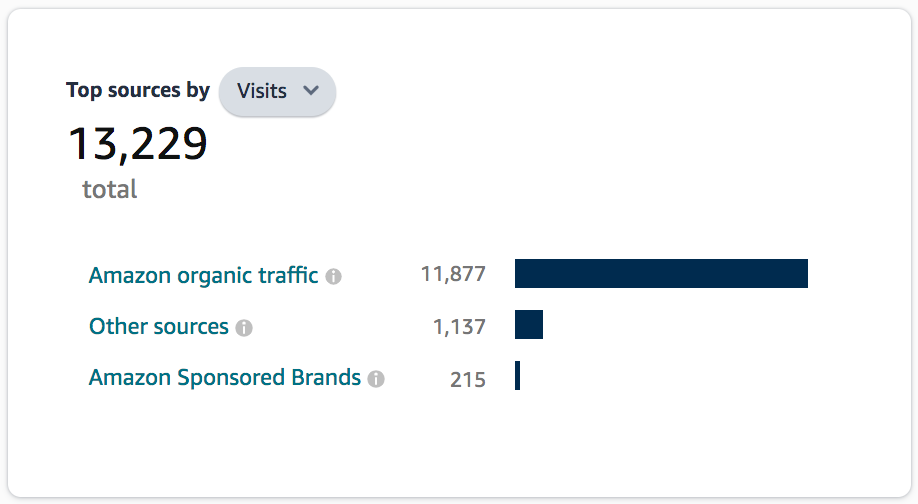
Measure your traffic and sales with Stores insights.
These Amazon brand metrics provide you with valuable insight into the performance of your store.
Metrics give you a better understanding of which products are selling well and where shoppers are coming from.
Metrics such as:
Sales
Visits
Page views
Traffic sources
By monitoring the performance of your store over time using these metrics, you can make informed decisions about how to optimize your store for maximum success.
Amazon Brand Store Case Study: Dream Pairs
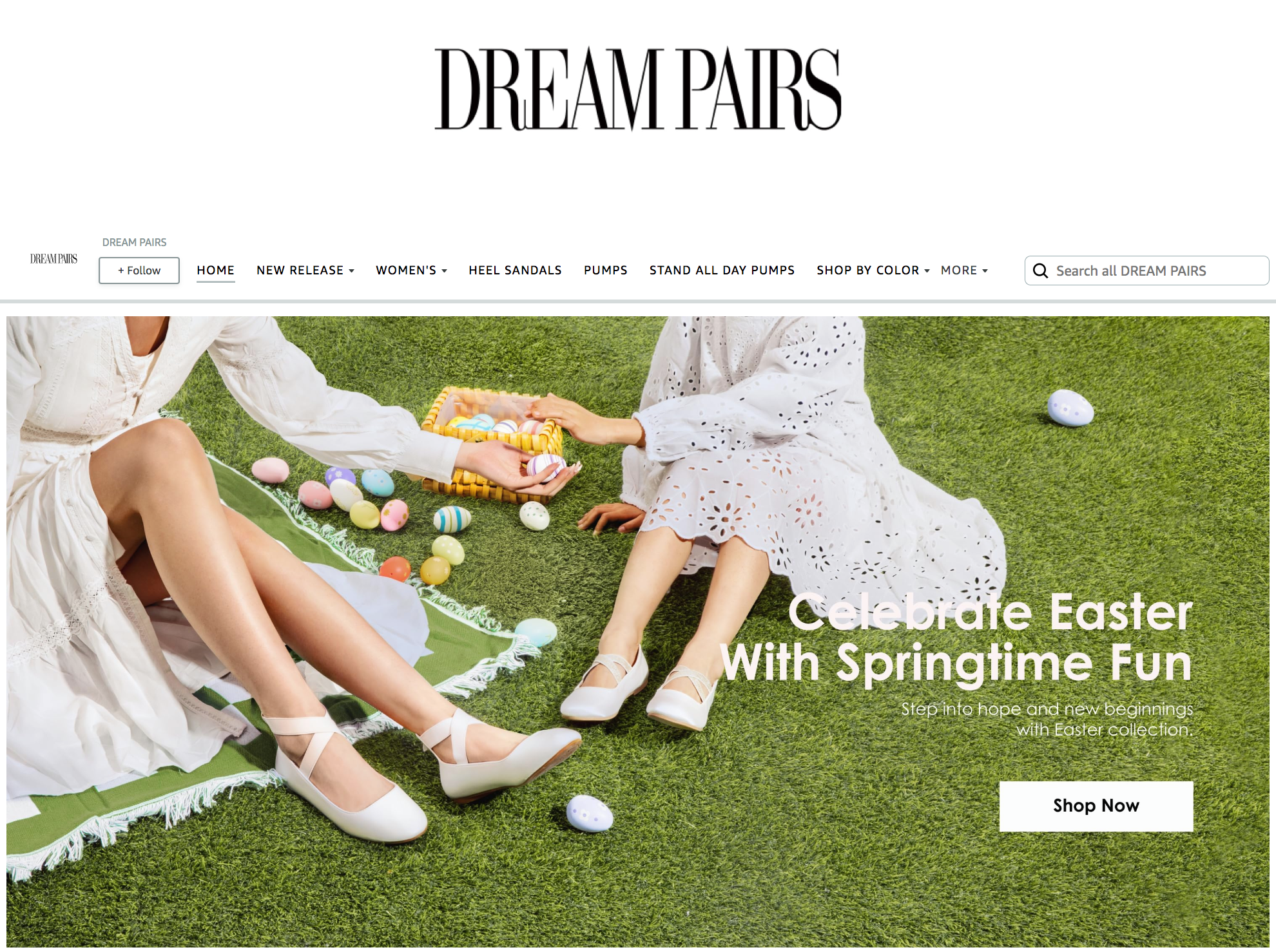
Dream Pairs Story
In 2009, Dream Pairs was created with the goal of providing fashionable footwear to customers without a hefty cost.
They began by selling in physical stores only, but later expanded online by selling a variety of shoes, sandals, boots, and sneakers.

Dream Pairs Situation
Dream Pairs sought to reach a wider audience and make their products accessible around the world via an Amazon store.
Dream Pairs took the step with an Amazon Brand Store featuring widgets like the shoppable image, which allows customers to quickly click on featured products to see information and add them to their basket.
They also created deals sections and video widgets to engage shoppers. To match the brand’s message, they designed individual sections for each audience.
Dream Pairs conducted A/B testing to ensure high engagement for their imagery used in posts, Sponsored Brands campaigns, and Store.

Dream Pairs Results
Dream Pairs has seen positive results since its storefront was launched, Store views rose by 50%, sales were up 42%, and the average order size was 24% higher.
Conclusion
Building a brand store on Amazon can help increase your brand’s visibility, sales, and customer loyalty.
By utilizing high-quality images and videos, using your brand’s color scheme, and optimizing your storefront for mobile devices, you can create a visually-appealing storefront that reflects your brand’s identity and attracts potential customers.
This will help your brand resonate with your target audience and drive business growth.
Remember to regularly update and promote your store, while measuring your success to continuously improve your brand’s presence on Amazon.
Frequently Asked Questions About Building a Brand Store on Amazon
Q: Do I need to have a registered trademark to create a brand store on Amazon?
A: Yes, to create a brand store on Amazon, you need to have a registered trademark. This trademark will be used in your Brand Registry application. The goal of Brand Registry is to protect your brand and prevent other sellers from using your brand name or logo.
Q: How much does it cost to build a brand store on Amazon?
A: Building a brand store on Amazon is free. However, you may need to hire professional designers, copywriters, and Amazon Seller Central specialists to create high-quality images and successfully layout and upload your store.
Q: Can I use my own branding on my Amazon storefront?
A: Yes, you can customize your storefront with your own logo, product images, and other branding elements to create a cohesive brand experience for your customers.
Q: Can I sell products from other brands on my brand store?
A: No, your brand store on Amazon should only include products from your brand.
Q: Can I sell any type of product on Amazon?
A: No, Amazon has specific guidelines and restrictions on what types of products can be sold on their platform. Businesses should review Amazon’s guidelines before creating a storefront to ensure their products meet Amazon’s requirements. Reach out to the team at Ecom Optimization for a free Amazon Strategy Session to discuss your products.
Q: How much does it cost to advertise on Amazon?
A: The cost of advertising on Amazon varies depending on the ad type and targeting options you choose. You can set a budget for your campaigns and only pay when a customer clicks on your ad.
Q: How long does it take to set up an Amazon storefront?
A: The time it takes to set up an Amazon storefront depends on the complexity of the storefront and the number of product categories, and the total number of products being sold. However, with Amazon’s step-by-step tutorials and intuitive management tools, you may be able to have a basic storefront set up in a few hours (not counting customized image design or branded copy).
Q: How can I measure the success of my brand store on Amazon?
A: You can measure the success of your brand store on Amazon by tracking your sales, customer reviews, and engagement metrics. Amazon’s Brand Registry provides several seller tools that can help you track and analyze this data with amazing detail.
Q: Can I change my Amazon storefront design layout anytime?
A: Yes, you can change your Amazon storefront design layout anytime by going to the Manage Your Brand page and selecting the Storefront tab.
Q: Can I use a custom header image for my Amazon storefront?
A: Yes, you can use a custom header image (and so many other images) for your product grid or Amazon storefront. The header image should be 1200 x 445 pixels and should be in PNG or JPEG format.
Q: How important is Amazon storefront design for my brand’s success?
A: The importance of Amazon storefront design is growing as more competitors start using this marketing tool to their advantage. A well-designed storefront can help you stand out from the competition, convey your brand’s message, and (most importantly) increase your sales.
Take the Next Step Toward Unlocking The Power Of Amazon
If you’re looking to get more money from your Amazon efforts, hiring an expert is your best bet. An Amazon Account Management Agency will work with you on so much more than just Amazon Stores.
Daily management covers optimization of your ad campaigns, decreasing your advertising cost of sales (ACoS), and boost Sales Conversions, all while taking advantage of Amazon’s highly-effective Enhanced Marketing to grow Organic Attraction.
In other words, if you sell on Amazon (or want to) you can’t afford to not be leveraging experienced Account managers to your benefit.
ECOM OPTIMIZATION Amazon Account Management can help you to build an effective strategy that aligns with your unique brand needs.
Using a hands-on, human-led approach, we’ll help you get more from your Amazon sales channel, so you can enjoy more growth for your business in less time.
Ecom Optimization Amazon Account Management is here to Help
Ecom Optimization is a full-service Amazon Account Management Agency. Our team consists of specialists in all areas of Amazon optimization and management.
When you look at the many ways that Ecom Optimization Account Management can help you grow your brand on Amazon, you’ll see why selling on Amazon becomes headache-free with Ecom Optimization:


